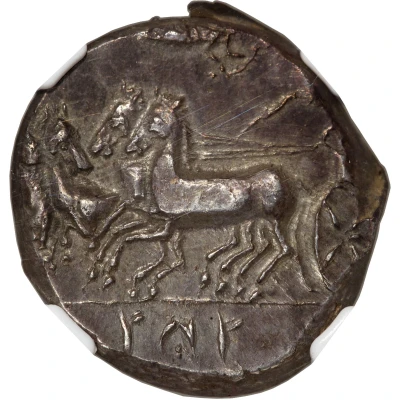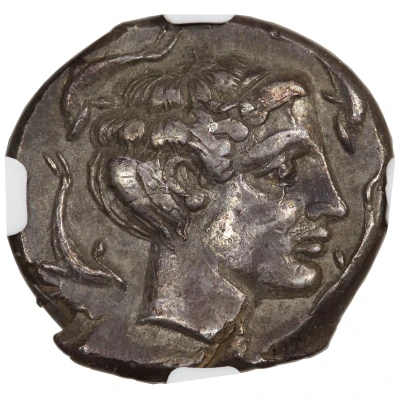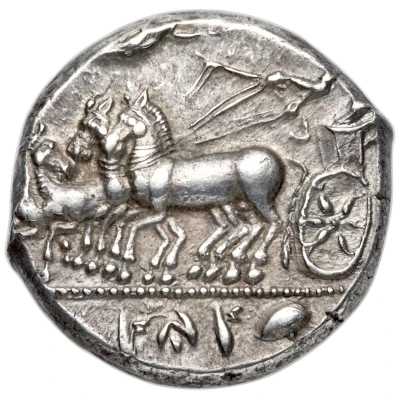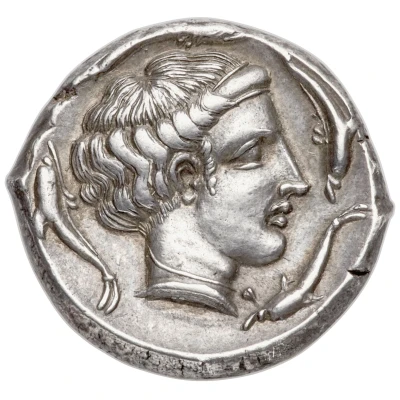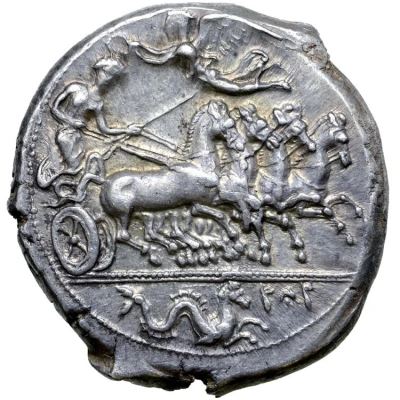
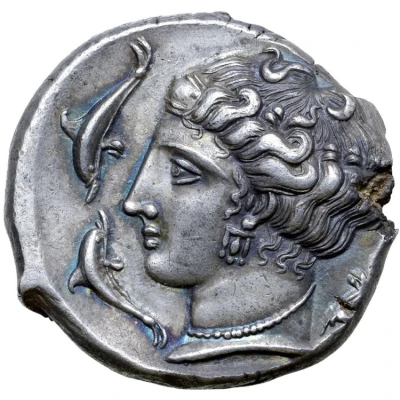

Tetradrachm 405 BC - 380 BC
| Silver | 17.19 g | 27 mm |
| Issuer | Ziz (Punic Sicily) |
|---|---|
| Type | Standard circulation coin |
| Years | 405 BC - 380 BC |
| Value | Tetradrachm (20) |
| Currency | Litra |
| Composition | Silver |
| Weight | 17.19 g |
| Diameter | 27 mm |
| Shape | Round (irregular) |
| Technique | Hammered |
| Demonetized | Yes |
| Updated | 2024-10-09 |
| Numista | N#195044 |
|---|---|
| Rarity index | 100% |
Reverse
Head of nymph left, wearing ampyx, triple-pendant earring and pearl necklace; three dolphins around.
Comment
From the Roma Numismatics Auction XVII Catalog:
The city that would eventually come to be known as Panormos (Greek: 'sheltered harbour') was originally founded in c. 734 BC by Phoenicians from Tyre, who established on the site a flourishing merchant colony which they named Ziz (Punic: 'flower'). It was the most important of the three colonies forming the 'Phoenician Triangle' cited by Thucydides, the others being Motya and Solus. The remains of the earliest Phoencian presence are few however, and mostly preserved in or below the very populated centre of the downtown area, and little excavation has been conducted on account of such efforts being costly and logistically difficult. Like Neapolis in Campania, (Naples), the city had two hearts - the first settlement was known as Paleapolis (literally, 'Old City'), in order to distinguish it from a second settlement built during the 5th century BC, called Neapolis ('New City'). Neapolis was erected towards the east of Paleapolis, and along with it monumental walls were thrown up around the whole settlement to guard against attack from the landward sides.
The influence of Greek designs on the Punic coinage of Sicily is particularly evident on this type. Jenkins (Coins of Punic Sicily, SNR 50, 1971) identifies the reverse portrait as being a "free adaptation" of the portrait of Arethusa on Kimon's dekadrachm. While the portrait lacks the hair net of Kimon's Arethusa, the triple-drop earring and characteristic curls on the top of the head are emphasised in the design. While Jenkins admits that the result is "remote" from Kimon's original, the second generation of Kimonian copies (reverse dies 28-29) are much closer reproductions, such that the inspiration for the type is indisputable. It has been noted that the obverse is a copy of the work of 'Euth-', who produced a radical, energetic die (Tudeer obv. die 15) at Syracuse, a work whose key elements are reproduced here. As the reverse is a relatively free interpretation of Kimon, so too is the obverse an adaptation of 'Euth-'; gone are the wings of the charioteer and the Skylla; instead of this symbol of Syracuse we see a hippocamp, perhaps taken from the coinage of either Himera or Messana, and in the place of the artist's signature on the original is the Punic ethnic 'Ziz'. Inspired by these types, the artist or artists responsible for this coin have produced immensely beautiful dies that are amongst the very finest in the whole Siculo-Punic series.
Interesting fact
The Tetradrachm coin from Ziz (Punic Sicily) features a unique blend of Greek and Carthaginian influences in its design. The obverse side of the coin depicts the head of the Greek goddess Athena, while the reverse side features a representation of the Carthaginian goddess Tanit, highlighting the cultural exchange and fusion that occurred between the two civilizations in the region.
